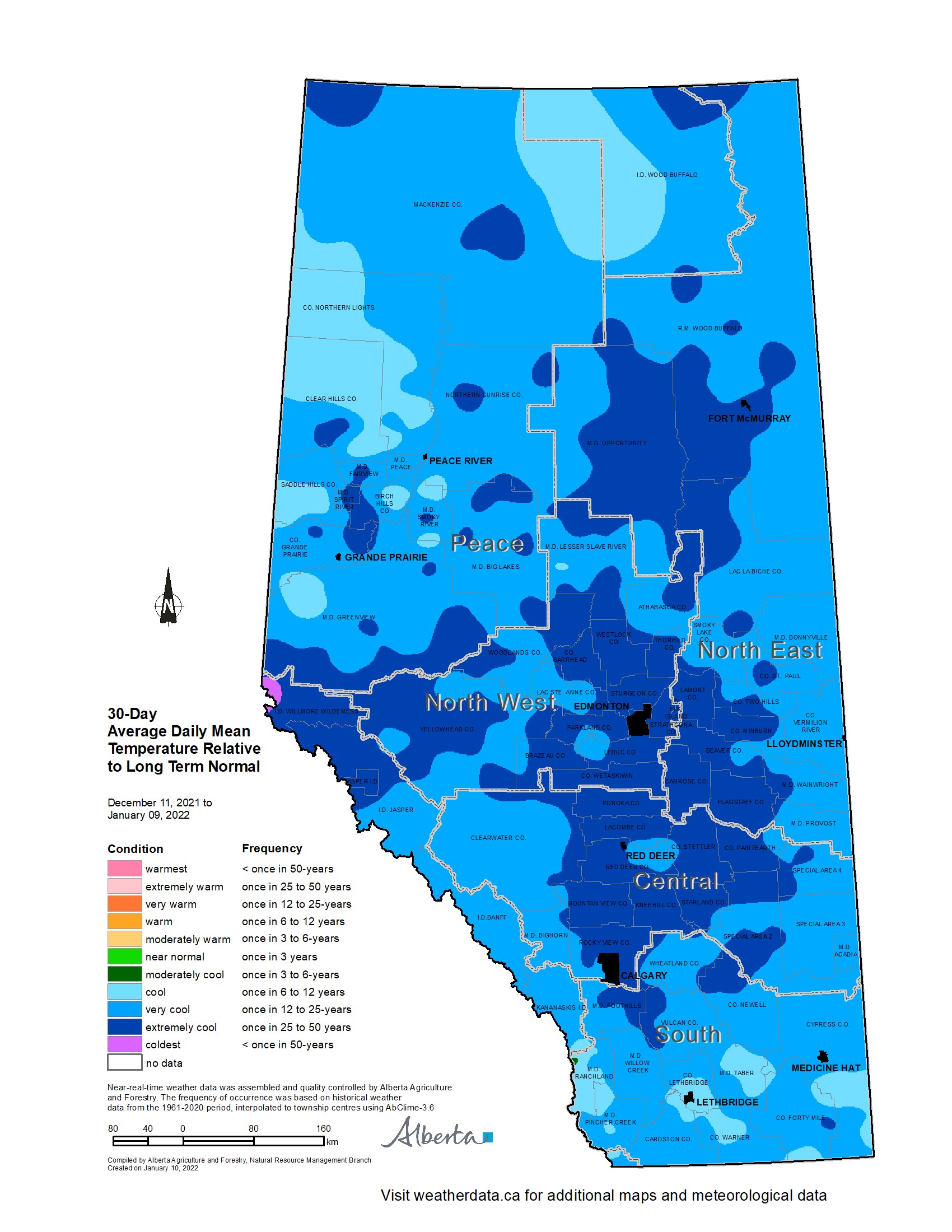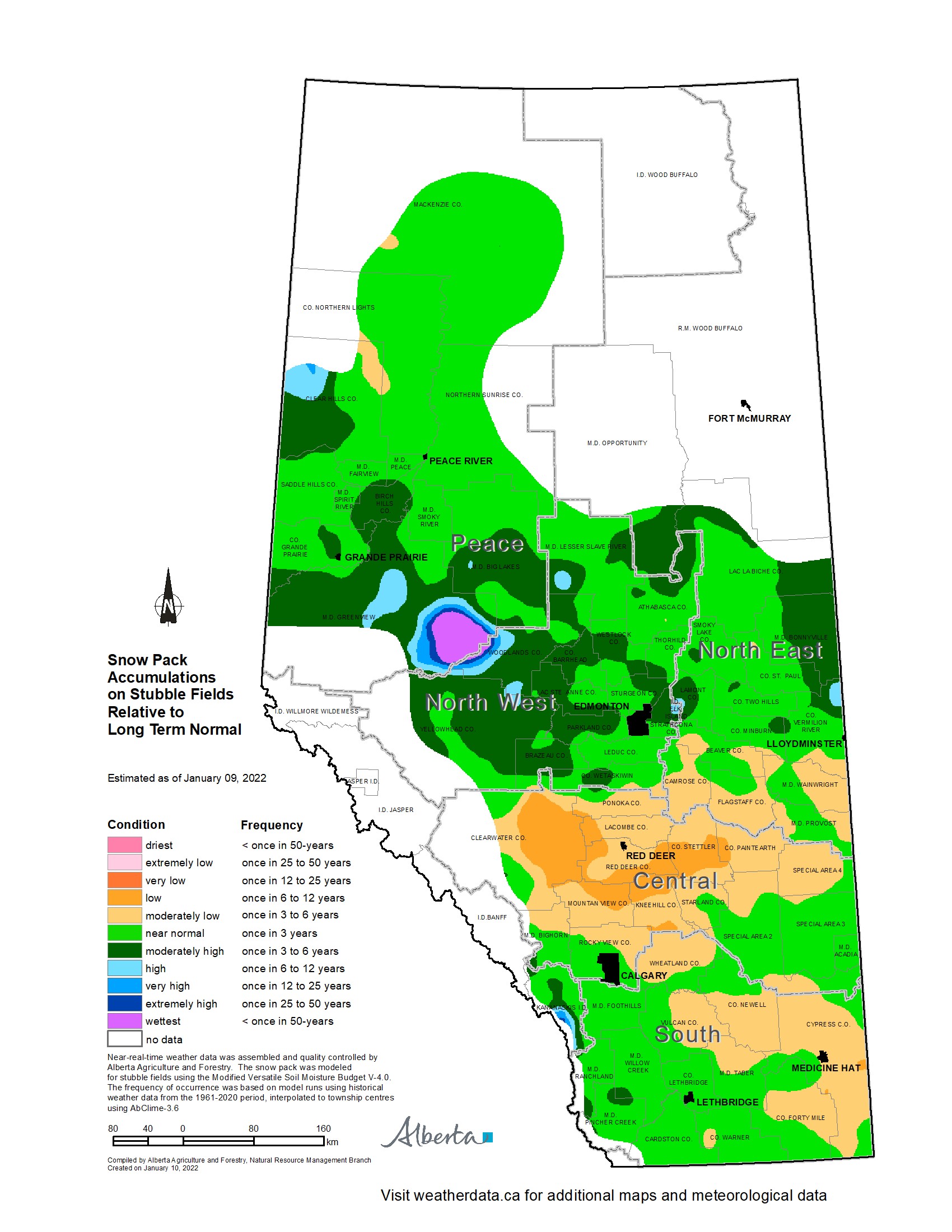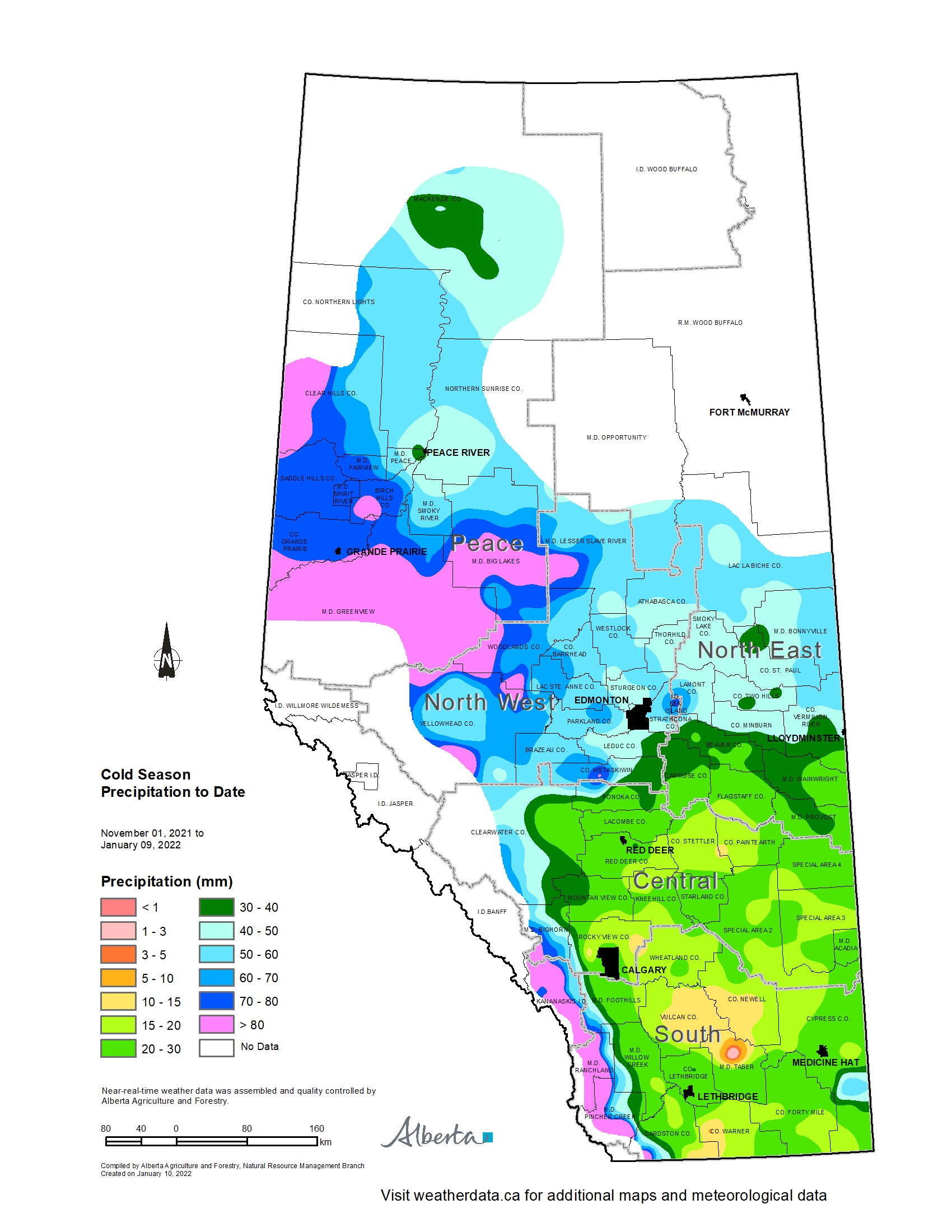Moisture Situation a/o Jan 9, 2022

Moisture Situation Update as of January 9th 2022
Synopsis
Mid December marked the start of a cold spell that persisted until nearly mid-January. Along with the intense cold, many lands across the north-half of the province received above average snow fall accumulations. In contrast, parts of the central and Southern Regions have below normal snowpacks for this time of year. Over the next few days, warm air will flood into the province, bringing a much anticipated end to the cold spell.

30-day Temperatures Relative to long term Normal as of January 9th 2022 (map 1).
Over the past 30-days, most of the province has seen temperatures this cold on average less than once in 25-years (map 1). Putting this into context, using Edmonton as an example, during the same time period, 1965 was in fact colder. It too was abruptly ended by a warm spell that saw temperatures shoot up to the freezing mark within two days. During the 1965 cold snap, there were more than 18 nights were the temperatures dipped below -30C. This compares to now where the Edmonton International Airport only recorded 15-days of -30C or colder. In contrast within the city, the U of A South Campus station only recorded 5-days when temperatures dipped below -30C.
Looking back as far as 1961, other similar cold snaps occurred over the same period in 2009 (third place), 1969 (fourth place) 1991 (fifth place) and 1966 (sixth place).

Snow pack accumulations as of January 9th 2022. (map 2 and map 3)
Currently across much of the north-half of the province snow packs are at least near normal for this time of year (map 2). In contrast, snow pack accumulations throughout much of the Central Region and the eastern-half of the Southern Region are below normal.
Total water contained in the snow pack, known as Snow Water Equivalent (SWE), ranges up from more than 50 mm generally north of the Yellowhead Highway (map 3).

South of Red Deer SWE is generally less than 15 mm and parts of southern Alberta have snow packs containing less than 10mm of SWE. However across the south, it’s not uncommon to have snow free conditions at this time of year and thus, it’s considered normal to have little to no snow on the ground (map 2).

Cold Season precipitation relative to normal (Map 4 and Map 5)
Following a long dry spell this past summer, winter precipitation accumulations have trended to near normal across the north-half of the province, but remained well below normal across much of the south-half of the province. Some isolated areas in the Southern Region are estimated to be experiencing once in 50-year lows (map 4) and many lands throughout the central and southern regions have seen less than 20 mm of moisture since November 1, 2021 (map 5).

Perspective
The Cold Season (November to March), on average accounts for about 20% of the total annual precipitation across the south, ranging up to about 35% through parts of the Peace Region. Thus, precipitation deficits with respect to cropping, are not as severe as they would otherwise be in the May to Mid-August period when crops are actively growing.
Typically fall and spring are times when the most soil moisture recharge occurs. Across the north, spring snow melt often runs off over frozen soils, and is not usually associated with significant soil moisture recharge events. Across the south, snow coverage is intermittent and warm dry winds usually dry up any surface moisture before it can be stored in the soil. Thus winter moisture deficits tend not to have too much of a negative influence on the following years crops, particularly across the south. That being said, a late spring snow occurring on thawed or partially thawed soils that need moisture, can have a tremendous benefit for the upcoming crops.
Contact Us
Saddle Hills
Junction of Hwy 49 & Secondary Hwy 725
RR1, Spirit River AB
T0H 3G0
T. 780-864-3760
Fax 780-864-3904
Toll-free 1-888-864-3760
frontdesk@saddlehills.ab.ca
Sign up to our Newsletter
Stay up to date on the Saddle Hills activities, events, programs and operations by subscribing to our eNewsletters.
